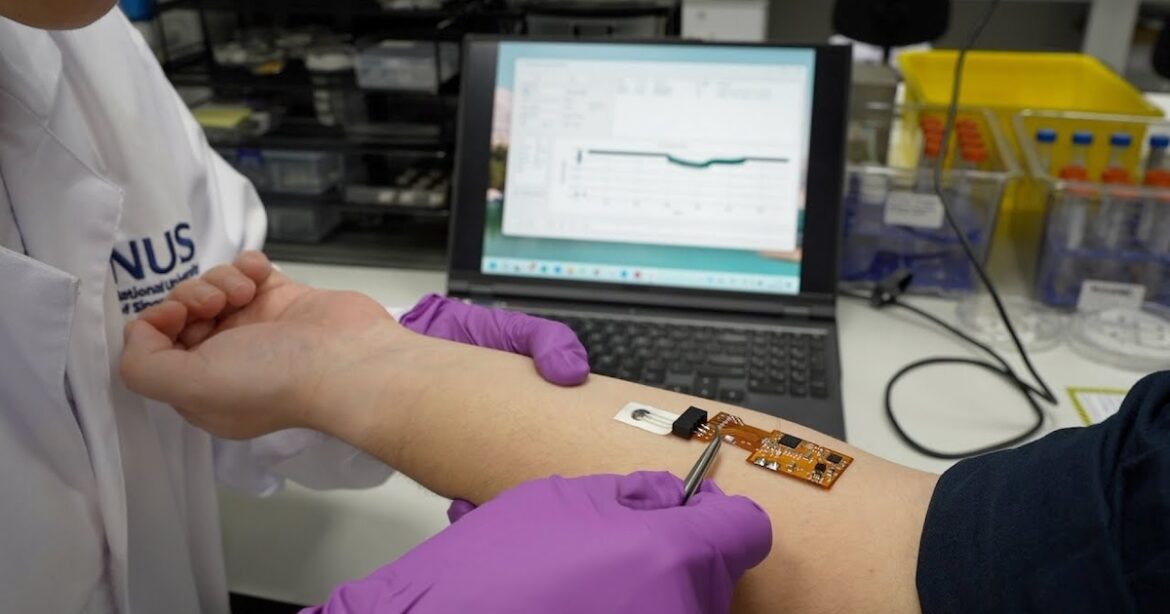
A novel wearable sensor developed in Singapore does not rely on common biofluids such as blood and sweat to continuously monitor chronic health conditions.
Instead, it uses what is called “solid-state epidermal biomarkers,” including cholesterol and lactate, found on the skin. These biomarkers, according to researchers from the National University of Singapore and the Agency for Science, Technology and Research, may be connected to cardiovascular diseases and diabetes.
Details about this invention, touted to be a first of its kind in the world, have been published in the journal Nature Materials.
HOW IT WORKS
The skin biomarkers dissolve into the hydrogel layer of the sensor and undergo electrochemical reactions. The resulting physiological data is then transmitted to an external interface through the circuit board.
“The ionic conductive hydrogel layer that solvates the biomarkers and the electronically conductive hydrogel layer facilitates electron transport. This bilayer enables the sequential solvation, diffusion, and electrochemical reaction of the biomarkers,” explained Liu Yuxin, research co-lead and assistant professor of the NUS Department of Biomedical Engineering.
“Another highlight is the sensor’s sensitivity with biomarkers being detected precisely even in low amounts,” he added.
The hydrogel-based sensor, produced using a low-cost manufacturing process called screening printing, is designed to be stretchable to adapt to the skin’s elasticity. Its design also minimises disruptions caused by movements, making it ideal for continuous health monitoring.
According to the researchers, the sensor can be an alternative to blood tests for monitoring diabetes, hyperlipoproteinemia, and cardiovascular conditions. Particular potential applications of this sensor include glucose tolerance testing and daily heart health monitoring.
The research team is now working to enhance the sensor’s working time and sensitivity and broaden its applicability by adding more solid-state analytes. They have also tapped hospitals for further clinical validation of the device, particularly for continuous glucose monitoring.
THE LARGER TREND
A similar stretchable sensor was developed in 2021 by Samsung researchers. Integrated with a PPG sensor, the skin patch can monitor and display heart rates in near real-time.
In Hong Kong, a wrist-worn bio-sensor – claimed to be the smallest in the world – can pick up weak electrochemical signals to continuously monitor blood sugar levels and antibody concentration in the blood.
Another research team from NUS and A*STAR last year introduced a thin, biocompatible sensor patch that uses AI to detect multiple wound biomarkers and track wound healing status within 15 minutes.
In Australia, a wearable patch worn on the neck can monitor various biometrics, including breathing and heart rates, by tracking a single amplitude signal.
